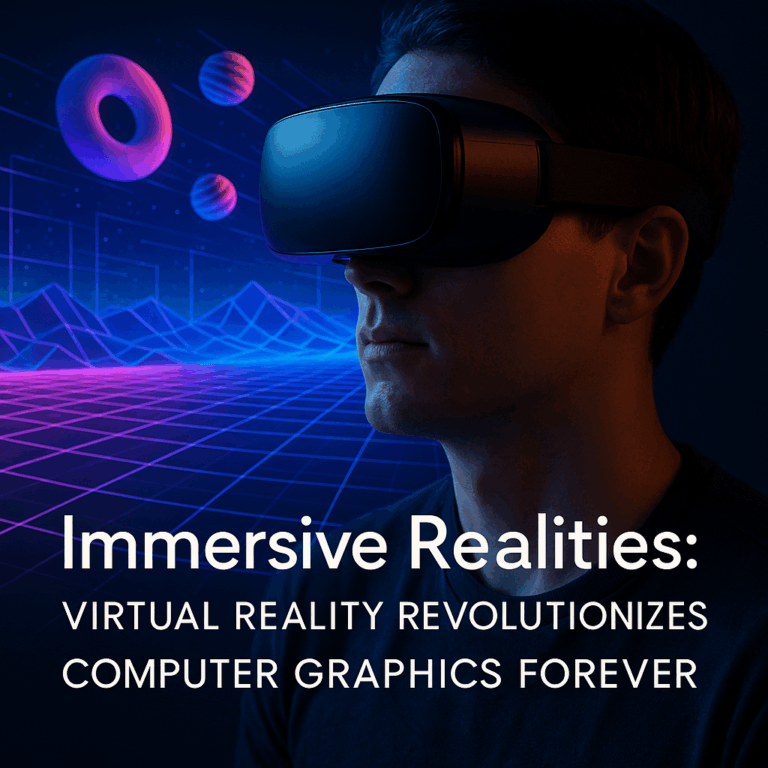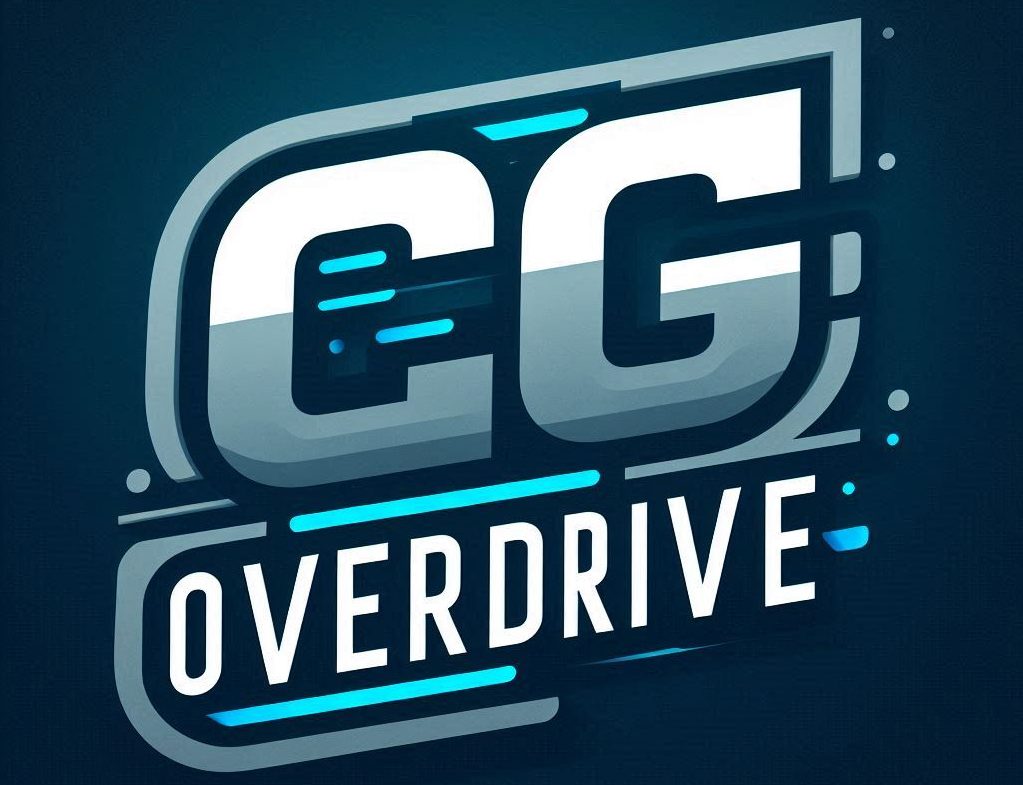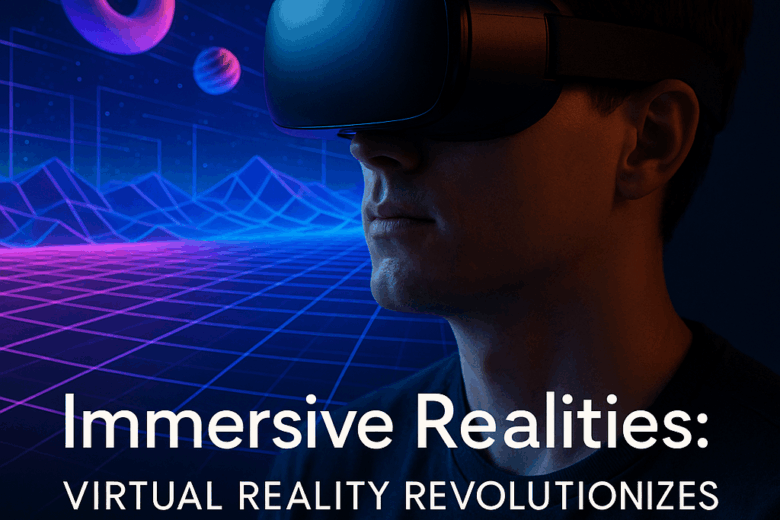Immersive Realities: How Virtual Reality is Revolutionizing Computer Graphics
The Transformative Power of Virtual Reality in CG
Virtual Reality (VR) has transcended its early novelty status to become a cornerstone of innovation within the computer graphics industry. Unlike traditional CG applications that primarily serve as visual outputs on flat screens, VR transports users into fully immersive, interactive 3D environments. Its significance stems from merging cutting-edge rendering technologies with real-time user engagement—bridging the gap between digital imagination and sensory experience. For developers, artists, and storytellers, VR is not just a new tool; it is a paradigm shift that demands fresh approaches to design, animation, and interactivity in computer graphics.
Core Components of VR in Computer Graphics
Understanding VR’s complexity requires breaking down the principal CG technologies it integrates:

| Component | Role in VR | Key Technologies |
|————————|——————————————–|——————————————|
| Real-Time Rendering | Generates visuals instantly based on user actions | GPU acceleration, Vulkan, DirectX 12, Unreal Engine, Unity |
| 3D Modeling & Animation | Builds lifelike avatars, objects, and environments | Blender, Maya, ZBrush, Motion Capture |
| Spatial Audio | Creates 3D soundscapes for immersion | Binaural audio, HRTF (Head-Related Transfer Functions) |
| Haptics & Input | Enables tactile feedback and intuitive control | VR controllers, gloves, sensors |
Each of these elements must synchronize seamlessly to eliminate latency and maintain presence—the illusion of being physically inside the virtual world. The stakes for computer graphics here are higher than ever, as every polygon counts toward realism and immersion.
Practical Techniques to Enhance VR Graphics
Designing compelling VR experiences requires mastering several advanced CG techniques unique to the platform:
– **Foveated Rendering:** By tracking the user’s eye movements, this technique renders high-resolution graphics only where the user is looking, reducing GPU load without losing visual fidelity.
– **Level of Detail (LOD) Optimization:** Adaptive detail scaling ensures distant objects consume fewer resources, enabling expansive VR worlds without performance drops.
– **Physically Based Rendering (PBR):** PBR shaders replicate real-world light-material interactions, crucial for VR where any inconsistency breaks immersion.
– **Volumetric Lighting and Effects:** Dynamic fog, smoke, and light scattering contribute layers of depth, enhancing the sensory richness of VR environments.
– **Spatialized Textures:** Textures that react to environmental lighting and reflectivity elevate realism and user engagement.
Integrating these techniques demands tight collaboration between CG artists and software engineers, often pushing hardware boundaries to deliver seamless experiences.
Design Principles Unique to VR Storytelling and Gaming
VR’s explosion in gaming is a testament to its immersive potential—but it alters how we think about narrative and interaction in computer graphics:
– **User-Centric Environment Design:** Environments must accommodate unrestricted user movement and perspective shifts, unlike fixed camera angles in traditional CG mediums.
– **Interactive Storytelling:** Players don’t passively observe but influence the plot through choices and interactions mapped to intuitive VR controls.
– **Natural User Interfaces (NUI):** Gesture recognition, voice commands, and hand tracking remove barriers between users and digital content, requiring highly responsive CG rigging and animation.
– **Comfort and Accessibility:** Reducing motion sickness means optimizing frame rates (usually 90 FPS or higher), ensuring smooth head-tracking, and avoiding visual conflicts through CG techniques like stable horizon lines and blink mechanics.
These principles push computer graphics beyond static visual mastery to an interactive art form that evolves with user behavior, redefining engagement metrics for developers.
Visual Effects in VR: Crafting the Unexpected in Three Dimensions
Visual effects (VFX) in VR go beyond spectacle; they become tactile experiences users interact with or avoid. The following VFX approaches elevate VR’s storytelling power:
– **Particle Systems in 3D Space:** Simulating fire, smoke, sparks, or magical effects that behave realistically in all directions around the player increases presence.
– **Destructible Environments:** Real-time physics simulation enables players to alter worlds dynamically, requiring advanced CG simulations to run efficiently on VR-capable hardware.
– **Post-Processing Effects:** Subtle bloom, depth of field, chromatic aberration, and motion blur have to be carefully calibrated for VR to avoid discomfort while enhancing mood.
– **Shader Innovation:** Custom shaders drive unique surface reactions to light or user interaction, allowing surreal effects like invisibility cloaks or morphing textures that engage users emotionally and intellectually.
The challenge is ensuring these effects run in real time without breaking VR’s strict latency budget, which often means re-engineering traditional VFX workflows.
Empowering VR Creators: Tools and Tips for Achieving Excellence
For CG artists and developers venturing into VR, here are expert guidelines to unlock the medium’s full potential:
– **Start with a Performance Budget:** Define polygon and draw call limits early, balancing visual fidelity with hardware capabilities.
– **Leverage Established Engines:** Unity and Unreal Engine offer VR-specific toolkits, including integrated physics, lighting, and input handling frameworks.
– **Prototype Early and Often:** VR interaction complexity warrants iterative testing with users to refine controls and comfort.
– **Harness Photogrammetry:** Real-world scans can accelerate environment creation, adding authentic detail without exhaustive manual modeling.
– **Invest in Collaboration:** Interdisciplinary teams of CG artists, programmers, sound designers, and UX specialists produce richer VR experiences.
– **Stay Updated on Hardware Trends:** Emerging tech like eye-tracking, inside-out tracking, and wireless headsets influence CG optimization strategies.
Adopting these practices empowers creators to push VR’s boundaries with confidence, thrill users with immersive worlds, and redefine computer graphics’ future.
Future Outlook: VR and the Next Frontier of Computer Graphics
The trajectory of VR within the CG industry is a thrilling saga of continuous innovation. Upcoming advances promise:
– **AI-Driven Content Creation:** Machine learning models that generate textures, animations, or entire worlds adaptively, significantly reducing production time.
– **Haptic Suit Integration:** Full-body feedback systems that translate virtual sensations into real-world stimuli, further collapsing the line between digital and physical.
– **Cloud Rendering:** Offloading complex CG computations to the cloud to enable photorealistic VR on lightweight devices.
– **Social VR Metaverses:** Shared virtual spaces encouraging community, commerce, and creativity, demanding massively scalable CG pipelines.
– **Mixed Reality (MR) Fusion:** Harmonizing VR with augmented reality (AR) to blend digital and physical environments seamlessly.
Each breakthrough requires fresh expertise and creativity from computer graphics professionals committed to empowering next-gen storytelling and immersive experiences.
—
“Virtual reality is the first step in a grand adventure into the landscape of the imagination.” – Frank Biocca
Immersing audiences in these vivid new digital dimensions requires mastering the intersection of technology, artistry, and user empathy. As VR reshapes the computer graphics landscape, it invites the industry to imagine not only new visuals but entirely new ways of experiencing reality.

